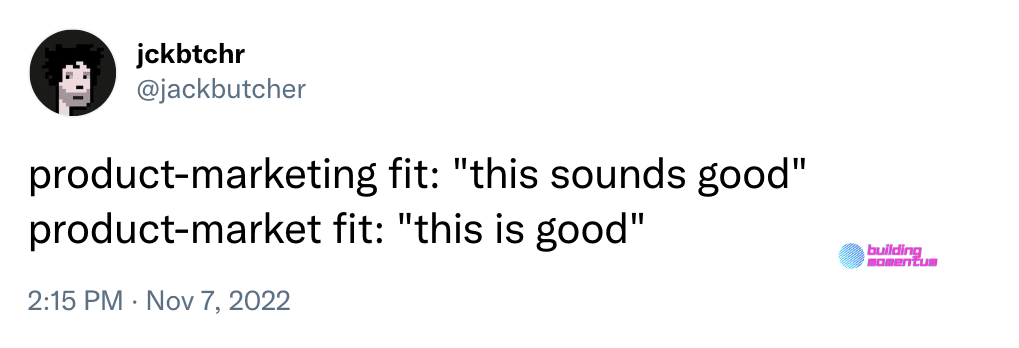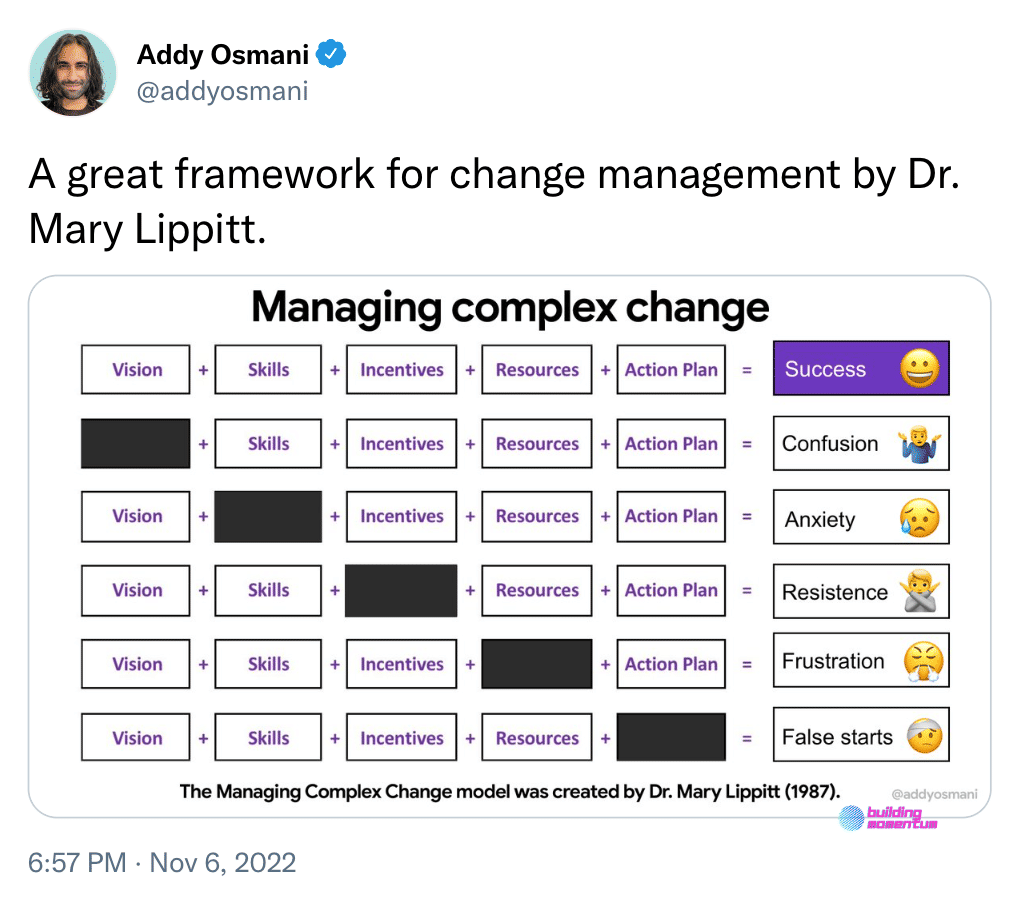Hey there. This is The Overview, a weekly roundup of noteworthy B2B SaaS stuff. You’ll find interesting thoughts, articles, and more from around the internet.
In this post:
How do you know when you have PMF?
I only wish it were as simple as this. You know when you have PMF, and something switches from potential customers saying “I’m interested,” to “Okay, let’s do it,” – but there’s a difference between finding PMF with early adopters, and finding PMF with the early majority.
The problem with PMF for early majority is converting “Okay, let’s do it,” to “Okay, we’ve done it!”. Once a customer has indicated they like the solution, they then have to evaluate (through several layers) and buy it (through approvals and procurement).
This is so much harder with enterprise software too. Champions may love it – but can they get it through their stakeholder groups?
How to select customers to interview
This article has some great tips on how to actually get into the practice of continuously interviewing customers, and making it a habit. Here are some of my highlights:
If you’ve never talked to a customer, I don’t want you to worry about optimizing who to talk to. I want you to talk to whoever it’s easiest to talk to…
But with time, I want you to start to think about how to increase the variation… Don’t just talk to small companies if your products serve small, medium, and large companies. Don’t just talk to super engaged customers if you also have customers that are not that engaged. We’re looking at variation in behavior. We’re looking at variation in demographics.
If you make the interview all about your customer, their experience, and what they’re trying to do, the vast majority of time, they’re going to end the interview with, “Wow, when can we do this again?” So the key is to change your interview to be more about your customer and less about your product.
Change management
Most product marketing strategy is change management: new products, pivots, changes in positioning and narrative, new GTM strategies.
Here’s a great framework on the core components that make successful changes happen: vision, skills, incentives, resources, and a plan. Consider all of these aspects, or you’ll experience confusion, anxiety, resistance, frustration, or false starts.
Thanks for reading! Let me know what you thought – find me on Twitter and LinkedIn.
P.S. If you’ve found value in Building Momentum, could you buy me a coffee? Here’s my tip jar – any support is gratefully appreciated!
P.P.S: If you enjoyed this post, will you share Building Momentum with your network?


